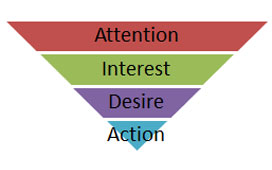

07 July 2014
Maximising ROI on your Marketing Part 2
Last month we looked at marketing and what it is all about. Just to re-cap, we came to the conclusion that marketing can defined as:
Ensuring the right person receives the right message in the right way, at the right time (together with memorable and distinctive branding)
But that is not as easy as it sounds if we look at the various elements separately.
The Right Person
Knowing your audience is an absolute key factor in getting your targeting right. So there are a number of different questions to ask, to determine: Who is your customer?
So consider the following when talking about your customer:
- Where does he/she work?
- What is his/her job?
- What is he/she looking for / what does he/she need?
- What media does he/she consume?
- How does he/she consume media?
In order to ensure that your communication with your target audience is relevant and effective, these questions and more should all be answered. But it is not enough to know you audience as you should also know what to tell them.
The Right Message
Naturally, there are a number of basic things to get across, the answers to questions like:
What benefits do you sell / what problems do you solve? Why your products? Why your company?
In other words, your USPs.
But there is more to it than that, as your marketing collateral needs to take the reader on a journey and bring them to the desired outcome. The AIDA principle can be a useful tool to help with this.
The AIDA Principle
AIDA stands for Attention, Interest, Desire and Action. So when communicating with your audience, your piece needs to attract your target audience’s attention. In most cases, this is where the headline and graphic have to deliver, but for instance in emails communications, your subject line is a super-important part of this.
Once you have the reader’s attention, the creative effort (mostly image and graphics) should stimulate interest, and your text and descriptions should create desire, either to own the product or want the service. Finally there should be a call to action that motivates and enables your prospect to get in touch or make the purchase.
In putting together your messages and materials, have this journey in mind, and as you would plan any journey, start with the destination; i.e. what action do I want my prospects to take after they have seen this? Then plan out the rest from there.
The Right Way
Given the huge variety of communication channels available today, deciding on the most appropriate way to get your message across is increasingly difficult. Understanding what media your target audience consumes and knowing the way they consume media (as a simple example, do they read paper magazines or do they prefer the on-line version?) will be very important in deciding how to communicate with them.
Another factor to consider is the message you’re sending and whether or not the message is suitable for the medium. As an example it seems unlikely someone will buy a £50,000 complex engineering solution based solely on a tweet, but it can be a viable route to attract attention and generate interest, so the “action” message should be one to encourage them to gain further information.
It is further important to realise that no matter how well you know your audience, it is unlikely that any one method of communication is the sole solution, as people are different. Remember it is called the marketing mix for a reason, so you should always identify a suite of channels to ensure that your message reaches your audience.
The Right Time
Timing your message right is another important factor in ensuring your marketing is effective. Naturally, holidays and special (national) events should be taken into account, and your audience may well have a season where they are particularly receptive to your offering.
In addition, there may be peaks and troughs in your sales or production cycle over a year and timing your campaigns and messages correctly can help even these out, and prevent your company being overloaded at certain times.
Taking all these things into account should help you ensure that your marketing is both relevant and effective, but unless you effectively track and record your communications, it will be hard to assess exactly how effective it is.
Join us next month to learn more.

Recent Newsletters
Get satisfaction!
24 July 2017
Adding value to a legal practice
21 July 2017
Industry 4.0: the game is changing
20 July 2017
Sell The Sizzle Not The Sausage!
20 July 2017
Is Print Media Dead?
29 June 2017

